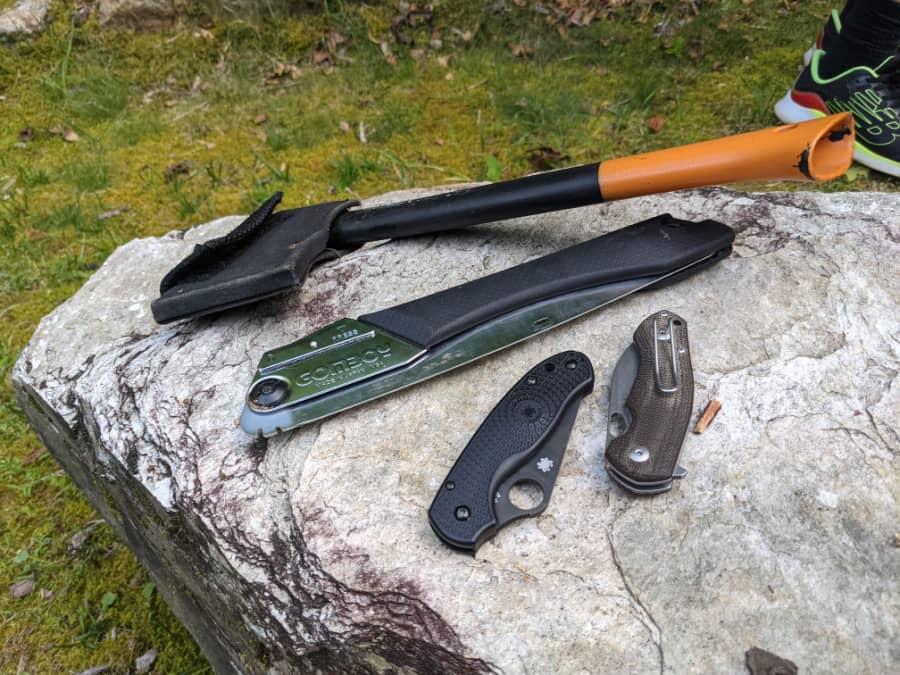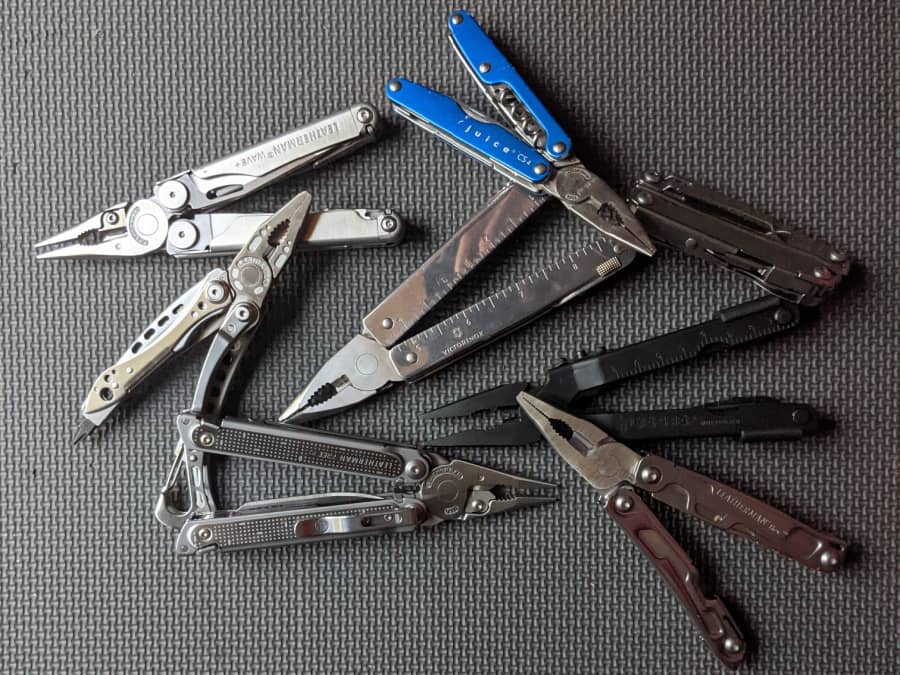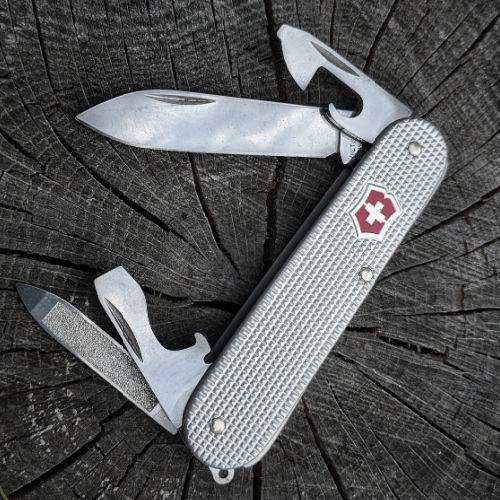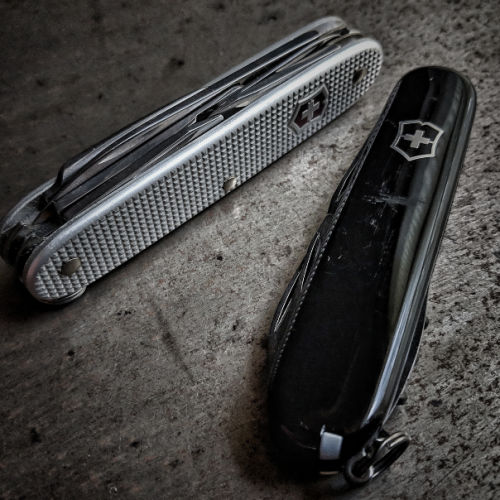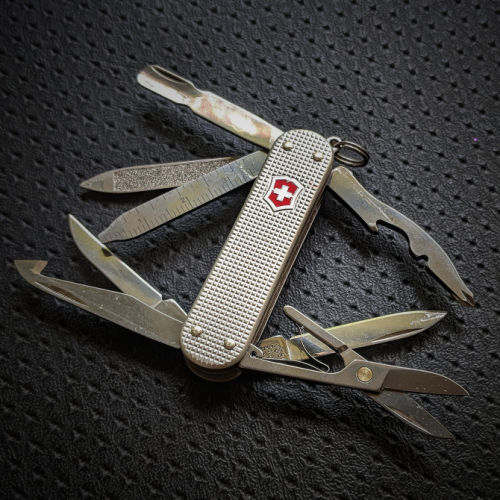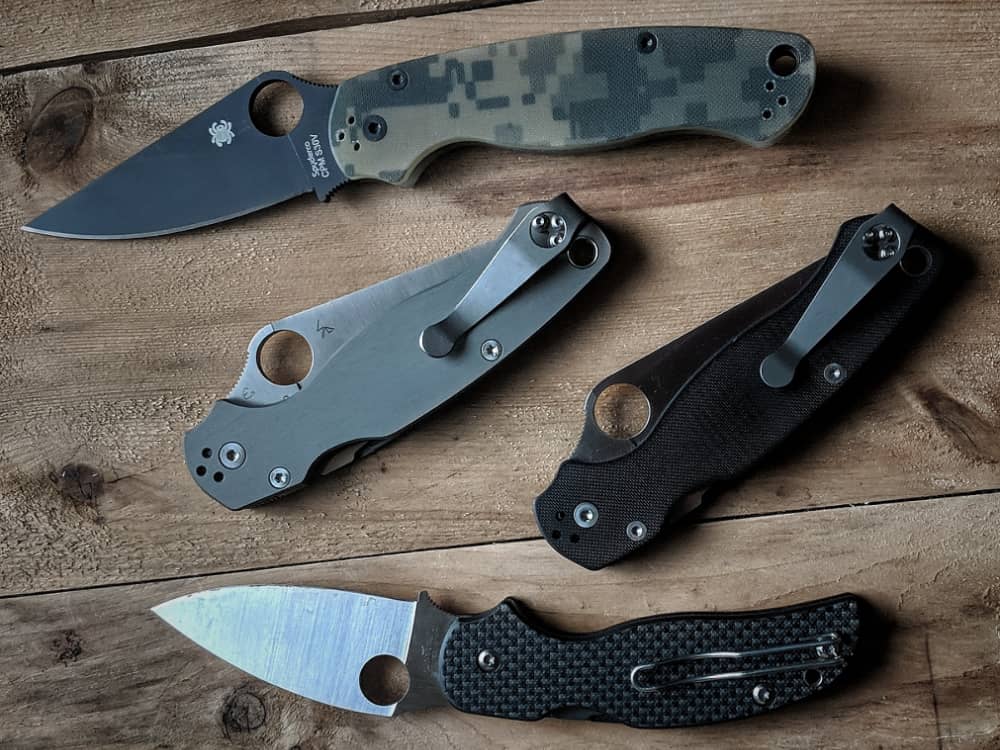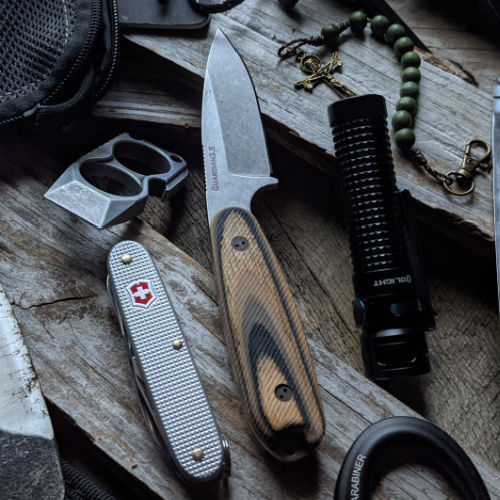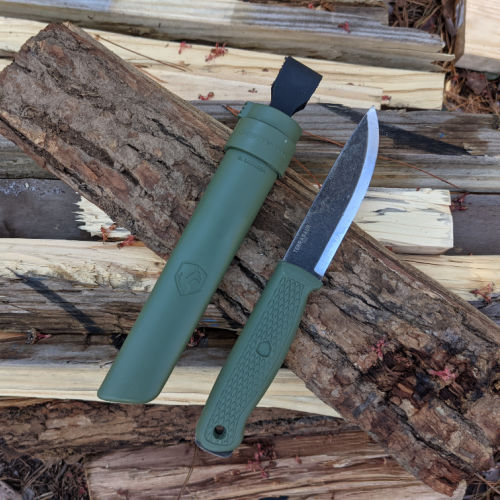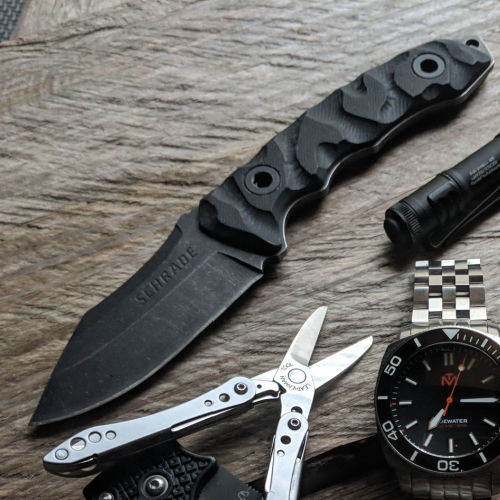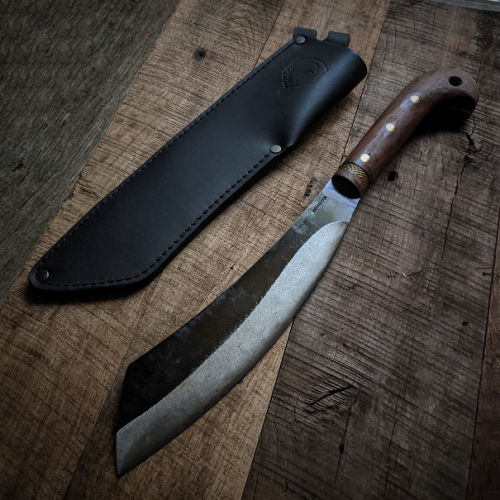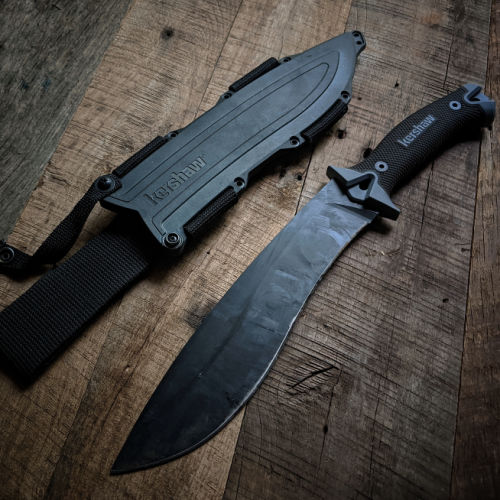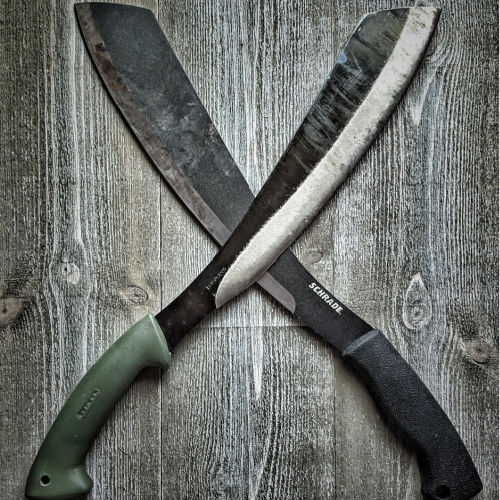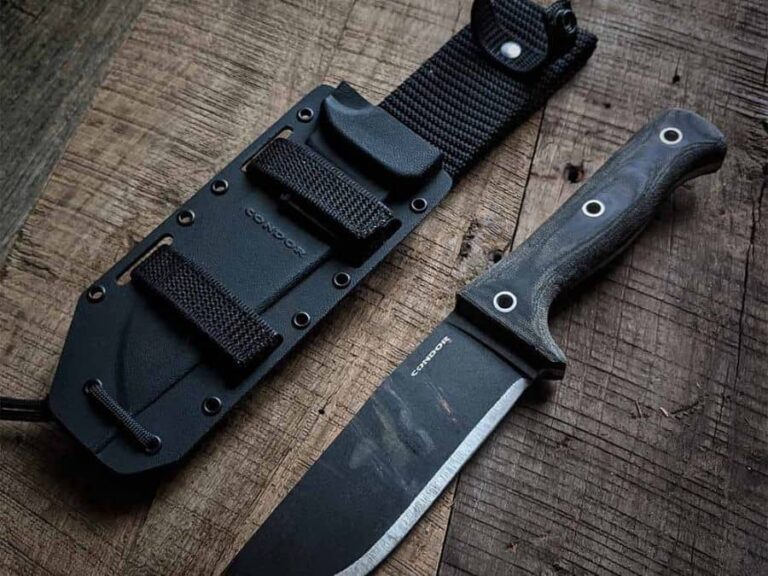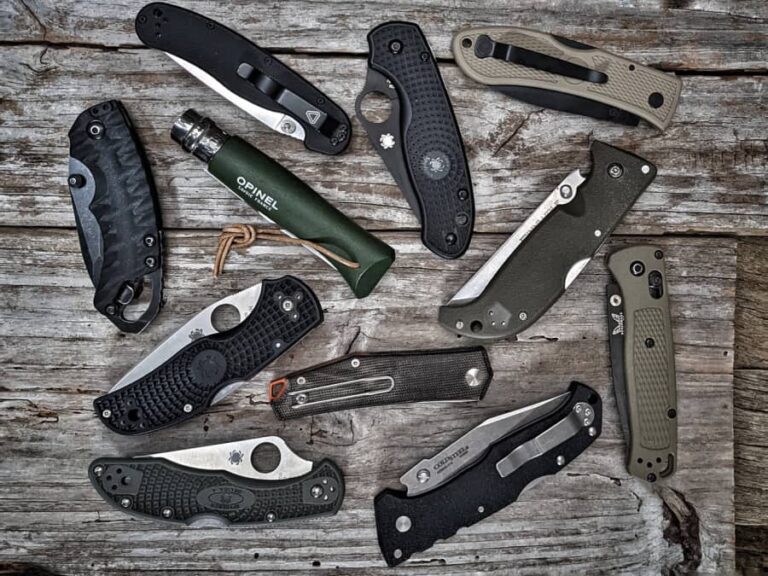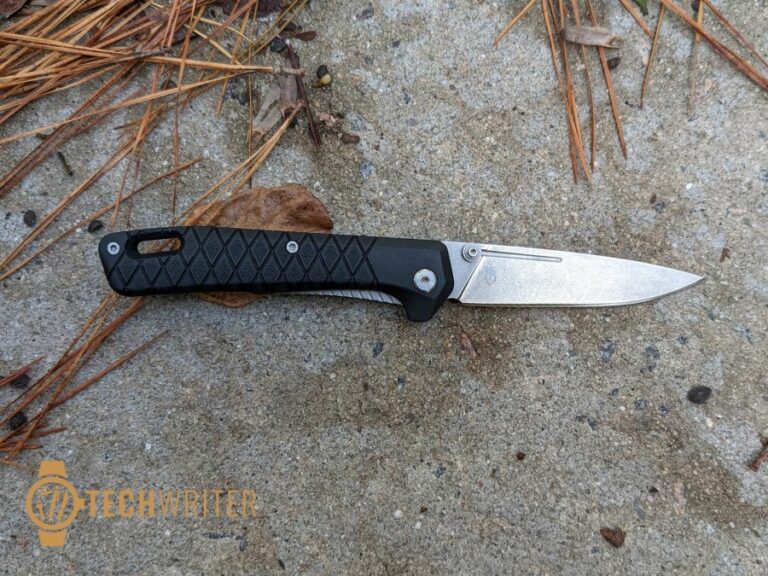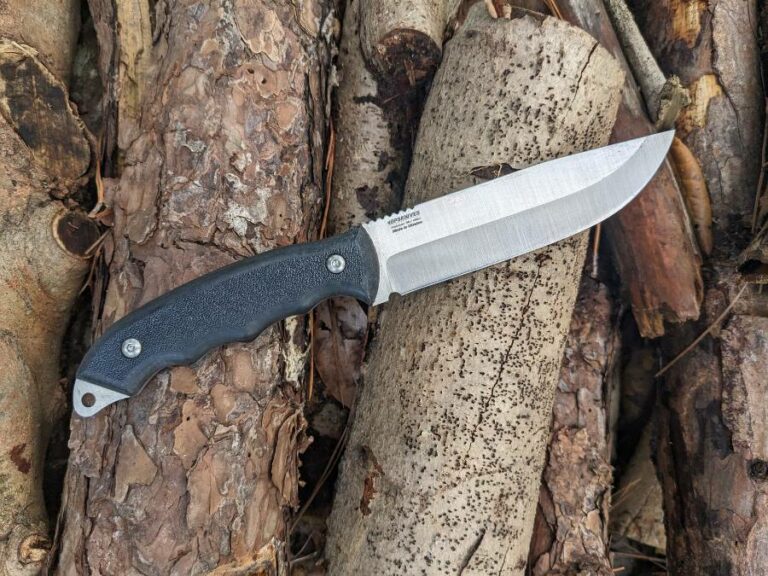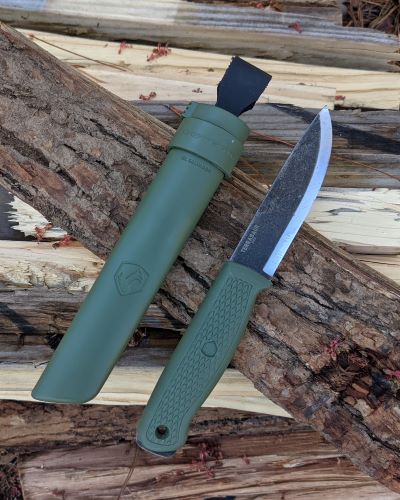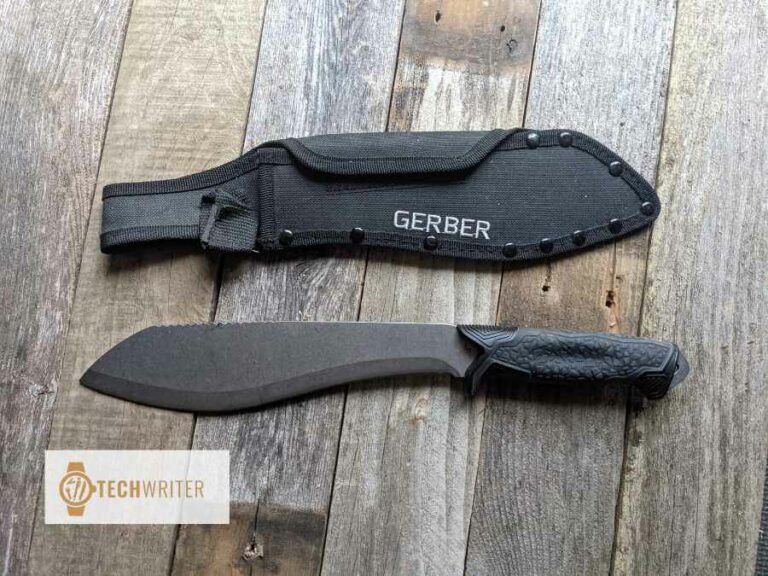Do I Need A Knife For Backpacking?
A common question for new backpackers is whether they should bring a knife when they go backpacking. The answer is absolutely yes! A knife should definitely be on your list of items to pack when hiking and backpacking.
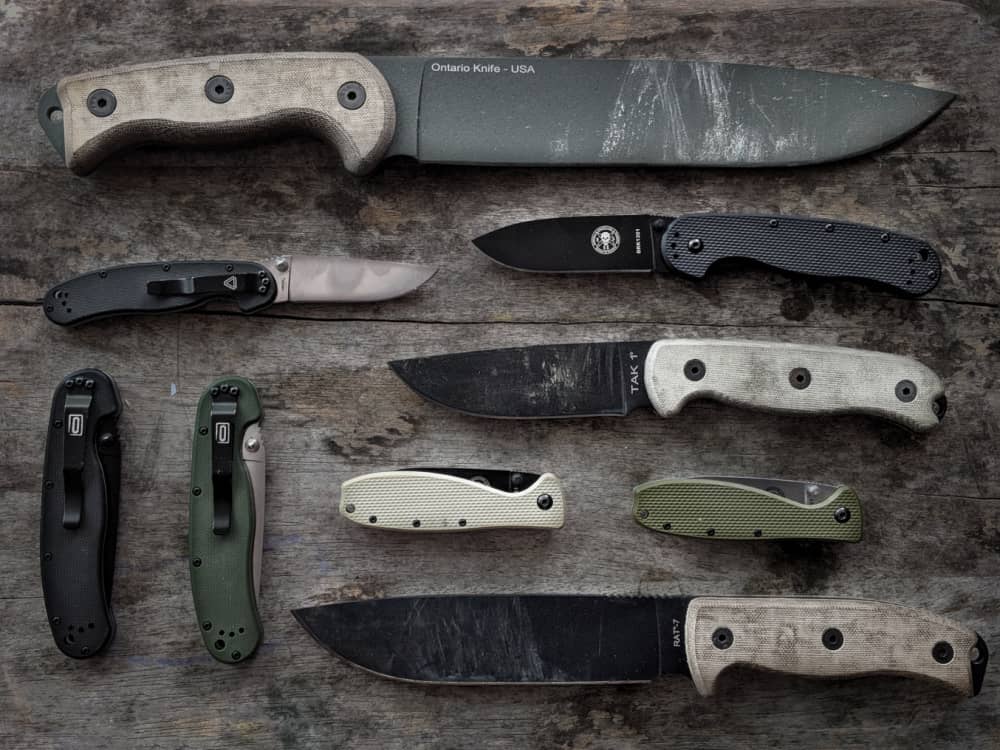
Ontario RtakII
Blue Ridge Zancudo Folder
Ontario Rat-1 Folder
Ontario OKC Rat-1 Folders
Bringing A Knife Backpacking Is More Than Just A Safety Measure
There are many reasons to bring a knife when you go backpacking, most importantly, for your safety. You never know what can happen when you are in the wilderness and a knife is a versatile and reliable tool to have with you.
When I talk about safety, I really don’t mean protecting yourself from bandits (though that could happen), it’s more about having something useful in both an emergency situation and to make your life easier on the trail.
Simple tasks such as opening bags of beef jerky, cutting cord, cutting food, opening dehydrated camp meals and more all require a knife or a pair of scissors. You may not be an expert at tearing duct tape with your teeth, and a knife is handy for that, too.
Then you have a whole list of first aid situations where a knife is great to have. Cutting bandages and medical tape and trimming and slicing moleskin are all much easier with a knife. If you’ve ever had blisters on the trail, you know how a piece of moleskin, fitted just right, can be a life saver.
There was a time when I was really hardcore about ultra-light hiking and I only carried a Gerber Ridge (a Victorinox Classic) which is a tiny Swiss Army knife with scissors.
The more time I spent hiking and camping far from civilization, the more I realized I was ill prepared for a real survival situation without at least a solid folding knife or small fixed blade. On a few adventures, I don’t know how I could have made it without a knife when it came to making tent repairs, processing wood for kindling and fastening emergency shelters in a storm. I am sure I would have survived, but it was a whole lot easier with a knife.
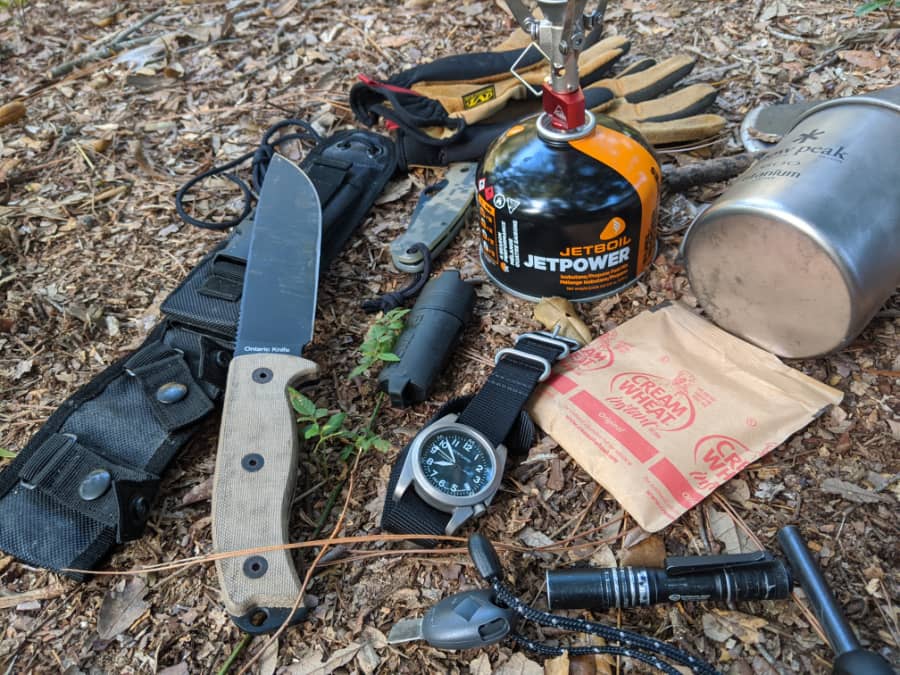
Common Uses For A Knife When Backpacking
And, if you want more proof that you need a knife when backpacking or hiking, just remember Aaron Raulston’s story of having to cut off his own hand when it got lodged under a boulder and he was alone. I recently reviewed his book here.
In the grand scheme of things, what is an extra 4 or 5 ounces for a solid pocketknife? Especially when it could mean not just comfort and convenience, but life and death.
Besides an emergency or extreme situation, let’s look at some common uses for a knife while backpacking:
- Fixing or repairing your camping gear
- Opening packages or wrappers
- Slicing rope or cutting tape
- Whittling or carving
- Cooking, preparing food or cleaning fish
- Spreading peanut butter or other types of condiments.
- Cutting food such a cheese cubes, pepperoni sticks or blocks of chocolate, etc
- First aid and treating wounds such as blisters or removing splinters
- Making sparks to start a fire
- Cutting branches and bark for kindling
Once you realize that you do indeed need a knife for backpacking, now you need to pick the right one!
Once you realize that you do indeed need a knife for hiking or backpacking, how do you know which one you should pick? The answer to that really depends on what type of backcountry adventure you’re going on. If you are into ultra-light hiking or long-distance thru-hiking, when every ounce is life-or-death, then there’s some really good knives on the market that are right around 1 or 2 ounces that are sturdy, reliable and, in a pinch, can do lots of different tasks.
To me, even if you were thru-hiking the PCT or the Appalachian Trail, knowing what I know now, I would give up carrying water or some food before I would stop carrying a knife.
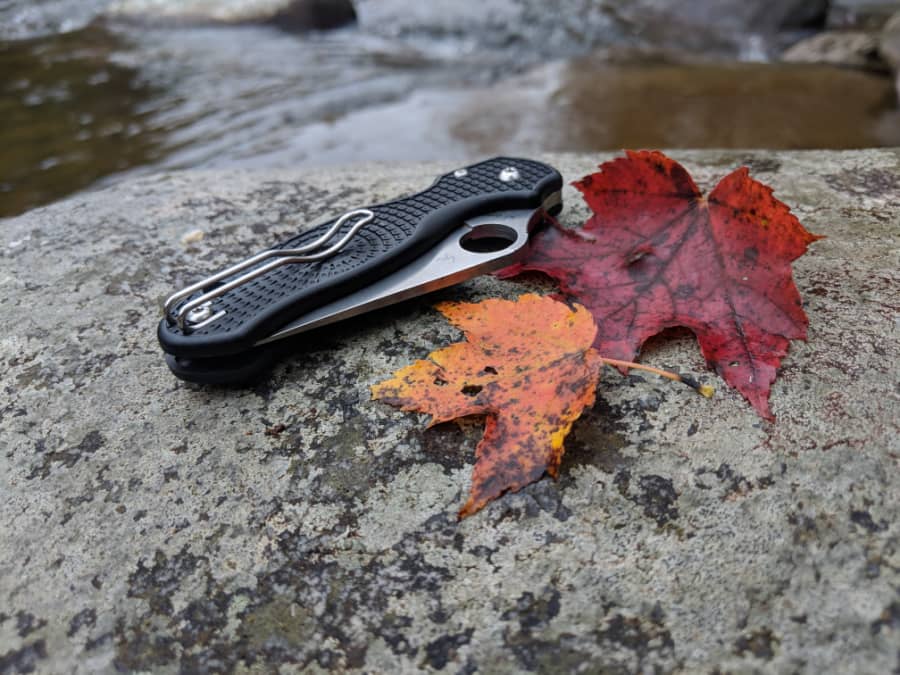
Now, if your backpacking adventure includes carrying 50 to 60 pounds on your back then you have a lot more options for your knife because you’re not quite as weight-conscious. At this size, you’re crossing the line between a bigger folding knife and a fixed blade and both of those options have pros and cons.
In my opinion, for longer trips or ones that are in more rugged terrain, your choice of a backpacking knife should lean towards a small to medium-sized fixed blade that can do more tasks including chopping, serious cutting and if it ever came to it, more survival type tasks. Personally, no matter what type of backpacking trip I go on now, I carry a robust folding knife, a small backpacking axe and a folding saw or a large chopping knife such as Skrama.
If your multi-day hiking trip includes very remote areas of the wilderness where you’re going to be 100% self-sufficient and you’re far from civilization (and the possibility of getting rescued), then you’re going to want a serious backpacking knife.
In this case, that would be an extremely heavy duty folding knife but, even more likely in this situation, you might want a fixed blade survival knife. When you’re talking about a fixed blade survival knife, there is a huge arena with many choices and different philosophies of how to use and handle the knife.
What Are The Basic Types of Knives For Backpacking
Just like any type of gear, there are unlimited options when it comes to picking a knife for backpacking. Let’s break down the three basic backpacking knives. Below I am highlighting the different categories of knives perfect for backpacking and hiking. They are also all mine or ones I have personally used. I have been hiking and backpacking for the better part of 20 years from quick one night outings to several day, off trail adventure. I can attest that the knives below are definitely worth checking out!
Multi-Tool
A multitool makes for one of the best backpacking knives you can carry. If you are on established trails and want something lightweight and versatile, these are for you. A small footprint with lots of functionality.
These are usually small folding tools with several implements besides a folding blade. Many of them will have scissors, tweezers, can openers and screw-drivers. Some of them will have many different folding options such as nail files, saw blades, awls and more. In this category we also see larger multi-tools such as Leathermans and other folding plier-based systems. These can have medium to heavy duty wire cutters, pliers and bigger folding blades. They are usually more robust and ride in a pouch on your belt. You can read my in-depth review of the Gerber Armbar here or the Gerber MP600 review here.
Swiss Army Knife
Is There A More Universally Useful Knife When Camping Than A Swiss Army Knife?
A Swiss Army Knife encompasses a broad category of folding pocket knives that border on multi-tools with folding knives. I like to think of a traditional Swiss Army Knife as a small to medium-sized footprint that has a larger folding blade, small blade, can opener and nail file. A great example of this would be the universally loved Alox Cadet. I remember when I went nuts in my ultralight hiking phase all I carried was a Gerber Ridge and a Victorinox Classic. I have since evolved my backcountry to something more robust, but I got a lot done and with just those little knives.
If you want to carry something for opening freeze-dried meals, cut rope, moleskin and cover the basic tasks you would find on the trail a Swiss Army knife is perfect. They are small, light and have just enough different blades and tools aboard to be extremely useful. I have a few detailed guides on buying Swiss Army knives and a few reviews here: Victorinox Alox Cadet Review, What Is The Best Swiss Army Knife To Buy and in this hiking article I talk about some Multitools and Swiss Army Knives.
Folding Knife
When is comes to folding knives, you have a ton of options. For practicality, size and weight, folding knives are the perfect choice for backpacking.
At this level, we are talking about a single blade folding knife that can be anywhere in the 2” – 5” range. Many of these will lock into place and be able to handle some more aggressive tasks. Options are plentiful in this range, from lightweight folders to serious beasts that can act like a fixed blade. This is also probably the best all around option for a backpacking knife. If you are packing a stove, tent and other gear and do not need to forage for your own food or build a shelter, a folder is the way to go. Regardless of the type of backpacking trip I take nowadays, I always have a folder and its usually a Spederco Delica.
Prices can range from less than $20 to well above $200 based on brand, lock mechanism, blade steel and handle/scale materials. I think the minimum amount to spend to get a good backpacking knife is around the $50 range. If you want to splurge and get one of the high-performance lightweights, a Spyderco Manix2 or my other favorite, the Benchmade Bugout will serve you well….and are fun to use!
Neck Knife / Small Fixed Blade
This is the sweet spot for a backpacking knife. If you are going into the wilderness or backcountry, your safety is your responsibility. A small fixed blade gives you just enough toughness and utility to perform harder tasks without being too big or too heavy. Below are 4 of my personal picks:
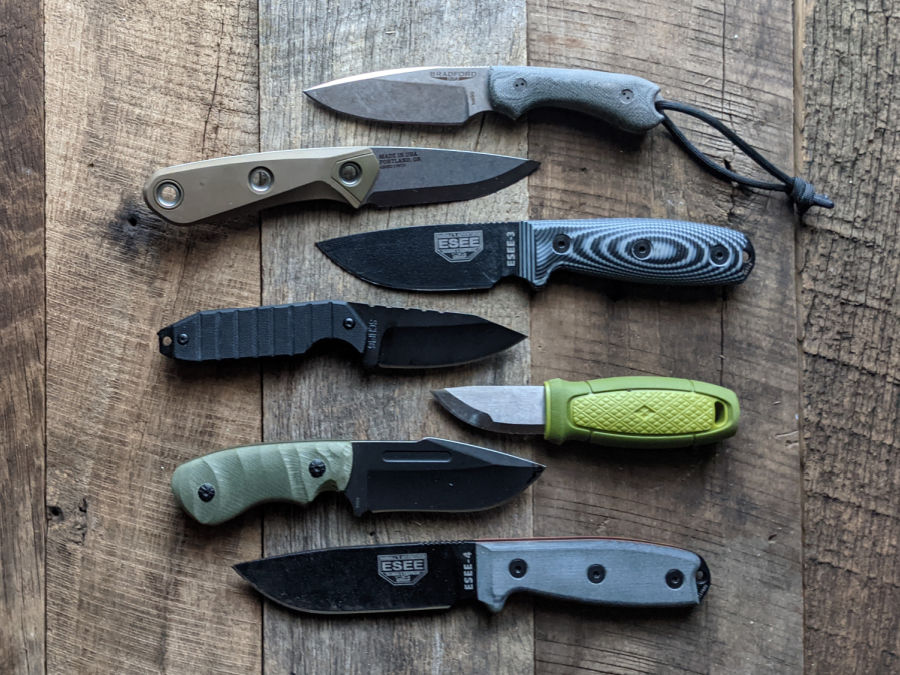
A Neck Knife or Small Fixed Blade For Backpacking:
This size range is perfect for backpacking and a good intersection of strength and size. A small fixed blade or “neck knife” with a blade length of 2.5″ – 4″ is a great all around option. You are not fending off a bear attack, but a small fixed blade is stout enough for serious backcountry tasks from fire making to emergency situations.
Medium Fixed Blade / Companion Knife
The companion knife, or belt knife, as some call it goes up a tad in size, but leaps up the ladder in the tasks it can complete. You are now firmly into serious wilderness tool area here. Over the years, I have gravitated to carrying this type of knife unless I am doing an ultralight trip.
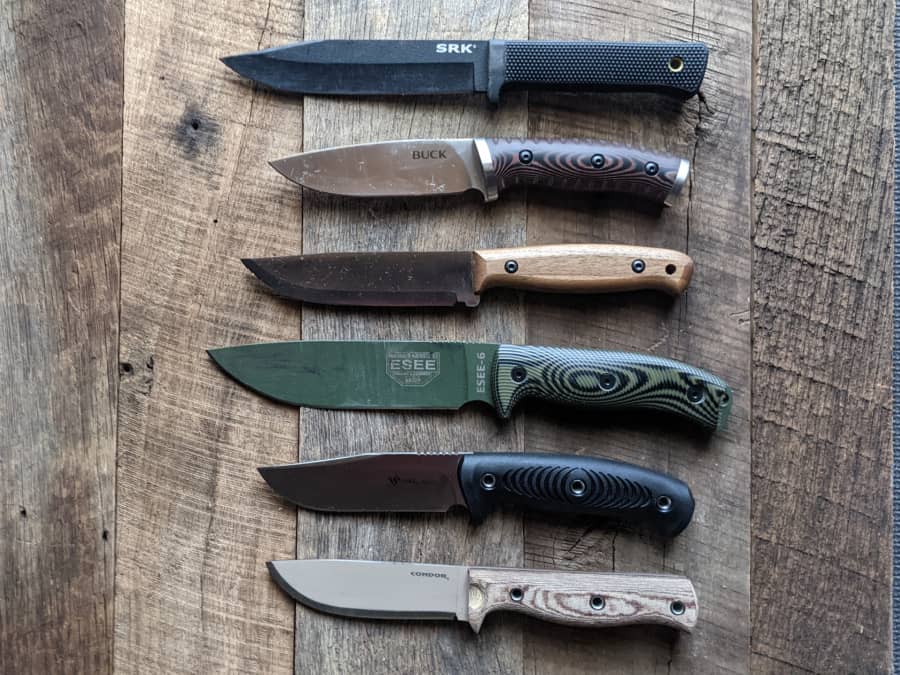
Using A Belt Knife or Medium Sized Fixed Blade For Backpacking:
Some folks like the sturdiness and strength of a small fixed blade. These are solid pieces in the 3” – 5” range and can be carried around the neck, in a sheath, or even in a pocket. In many cases, a small fixed blade will be added to a “system” of tools to accomplish different tasks or do the work of a larger blade in a pinch. Over the years I have evolved my camping carry and I now love the Esee 5 to bring backpacking. It has a great kydex sheath that with molle holes that can be attached to the straps of your pack or lashed to the sides.
Below are some good choices for a medium sized fixed blade for backpacking. These are my knives and I have used them all in a variety of situations. All are reliable and a good deal at their price point.
You Can Read Some Of Our Recent Fixed Blade Knife Reviews Here:
Morakniv Companion Knife Review
Condor Terrasaur Fixed Blade
Gerber Principle Knife Review
Best Budget Bushcraft Knives
Survival Knife
Survival knives are designed to be tough and versatile, with a blade that can handle everything from woodworking to food prep. The most important feature of a survival knife is its full-tang construction, which gives the blade strength and durability. Here are some good survival knife examples:
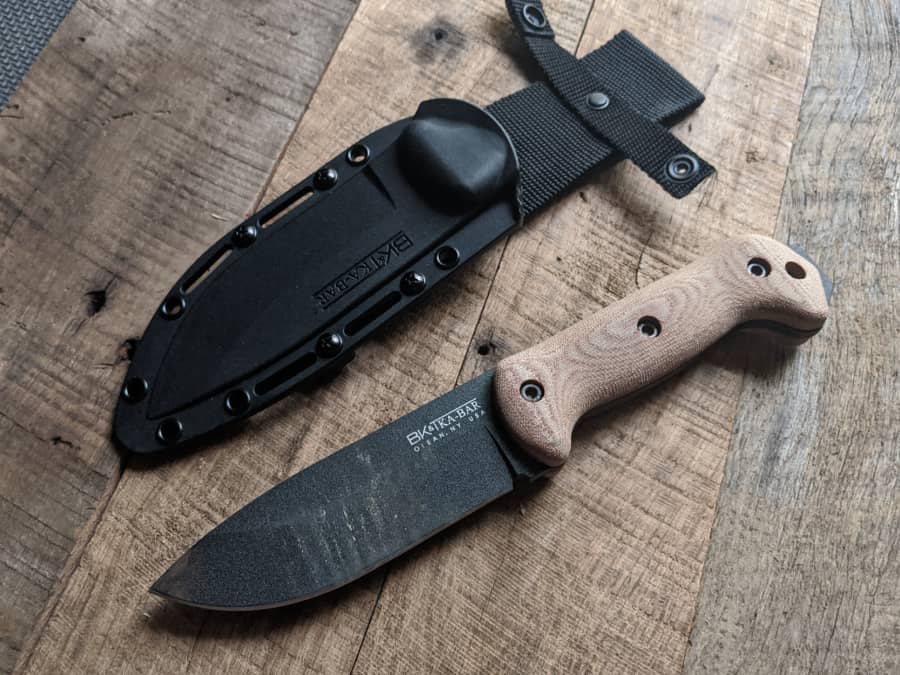
Survival Knives For Backpacking:
Depending on your skill and need, a large survival knife may be needed. To me, a survival knife is a large blade (over 8”-10” or more), is much thicker to be able to handle extreme situations and is made from high carbon steel so it’s easy to sharpen, durable, and can throw a ton of sparks for fire starting. In this range, you start getting into the “one knife” theory, the thought process that a big enough knife can cut, chop and be a viable self-defense weapon.
Survival knives are popular because it is assumed that anytime you go into the woods, something like this is needed. For most people a large survival knife is a little overkill. I think a better option is a belt knife or bushcraft knife paired with a chopper or machete. This is the combo I often use, a large folder with the Skarama below. I also carry a Fiskars ax all the time. I know this has become a target from the “leave no trace” people, but I never fell trees and only gather fallen branches and dead wood. Sometimes often big piece and an ax is handy in this case.
The Becker BK2 is probably one of the best survival knives around and if you don’t mind the extra weight can be handy when hiking or even better when you have a basecamp. You choice in fixed blades knives is a varied and vast as choosing any other backpacking gear. It’s good to test and feel knives before you head out.
Large Fixed Blade / Chopper Knives
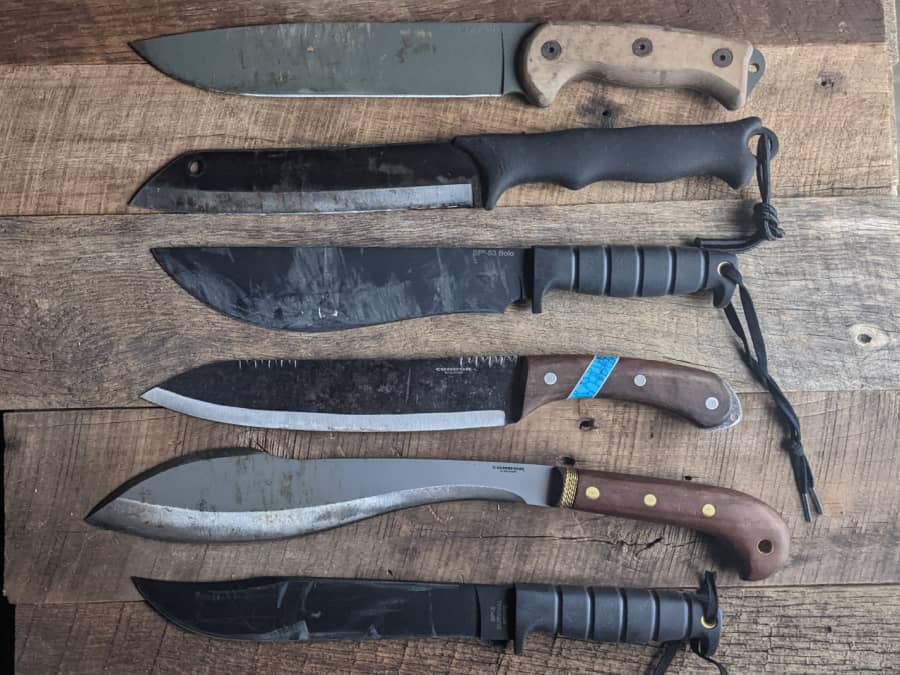
Large Fixed Blade Knives Can Be Perfect For Backpacking:
One thing you will realize is there are tons of options for backpacking knives and in each category of knives, there are limitless choices. When it comes to big survival knives or chopping knives, those with blades over 10″, you have a whole slew of knives to pick from. These are knives that many consider ‘do it all” or are more for the “one knife theory”, that is if you only had one knife in the wilderness, this would be it. These knives are also refereed too as Wilderness Knives, but what ever you call them, their big knives!
These are knives that have very large fixed blades that are usually 1/8″ to 1/4″ thick and have enough weight that you can almost use them as a small axe or hatchet. They are stout and can handle serious abuse as well as carve, cut and do everything adequate. Now, when it comes to backpacking, I think these are a little overkill for two reason, one is the weight, some are well over a pound or two. Second, we are just backpacking after all, you should have plenty of other gear with you in the event of a disaster.
Now, if you are practicing your survival skills or trying to go all out as a woodsman, you may find these to be the perfect tool. I have a few in my collection and I love messing with them. Remember, something that does everything usually doesn’t do anything excellent. If you want to try a big chopper, go with a Esee Junglas!
Small Machetes / Camping Machetes
A machete is not just for the jungle! Machetes come in a wide array of styles and are crafted specifically for different geographical regions of the world. Some are designed for upland, woodsy areas while other are slim and long for weedy vegetation. You can read about the different types of machete styles right here and common machete questions here. Below are some of my recommendations for a backpacking machete:
Small to Mid Sized Machetes For Backpacking:
First, let me say I LOVE MACHETES! When you find one you really like you can see how they are a outstanding woods tool. From clearing brush to chopping trees, you can count on them to handle the backcountry. In the realm of machetes, there are many, many styles and most machetes are developed by indigenous people for their terrain. We could talk about machetes and culture for a very long time.
For backpacking and hiking, the Parang machete is going to be your best option. It is a cross between a survival knife and and traditional machete, it usually has a slightly thicker blade and can handle harder use. You can find them with wood handles, rubber handles, and even micarta. The key here is to buy one with a full tang, that means the blade stock goes all the way to the end of the handle. I think a Parang and hatchet make a great wilderness combo and is very useful on backpacking trips that will extend for three days or more, or if you will be far from help.
Once you realize a knife is a valuable backpacking tool to have, you just need to decide on your personal needs and style
One thing that is very apparent when you go into the backcountry is that each person develops their own system of gear. What works for one doesn’t always work for another. But when you have to rely on yourself or a small group of people, each tool you bring has to be able to do multiple tasks. Picking the right knife for a backpacking or hiking trip is a very important decision and not one you should take lightly.

Blair Witkowski is an avid watch nut, loves pocket knives and flashlights, and when he is not trying to be a good dad to his nine kids, you will find him running or posting pics on Instagram. Besides writing articles for Tech Writer EDC he is also the founder of Lowcountry Style & Living. In addition to writing, he is focused on improving his client’s websites for his other passion, Search Engine Optimization. His wife Jennifer and he live in coastal South Carolina.

